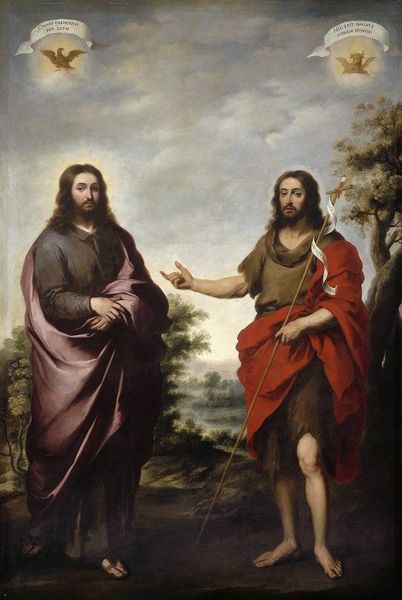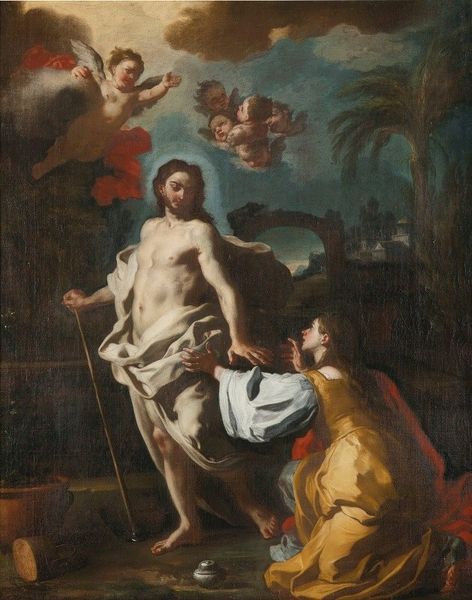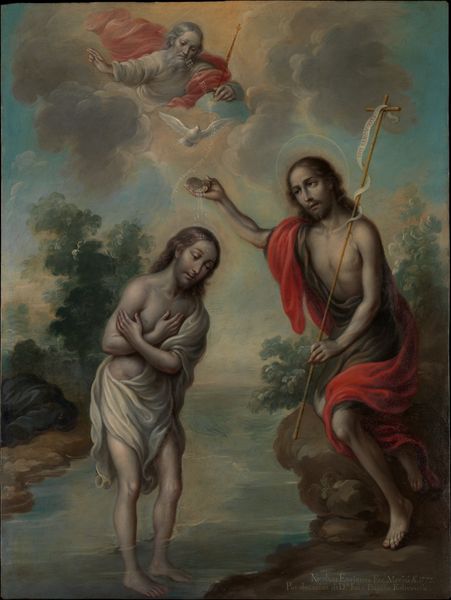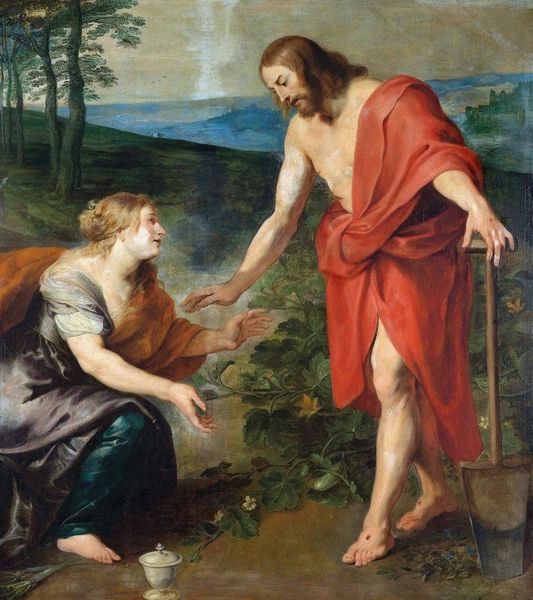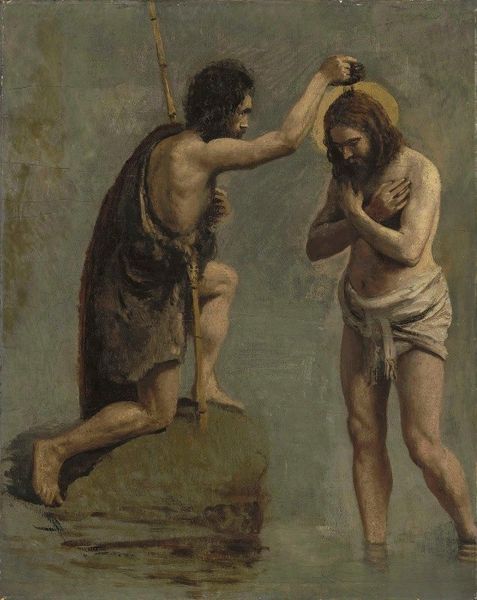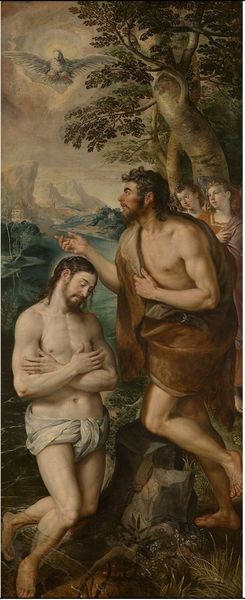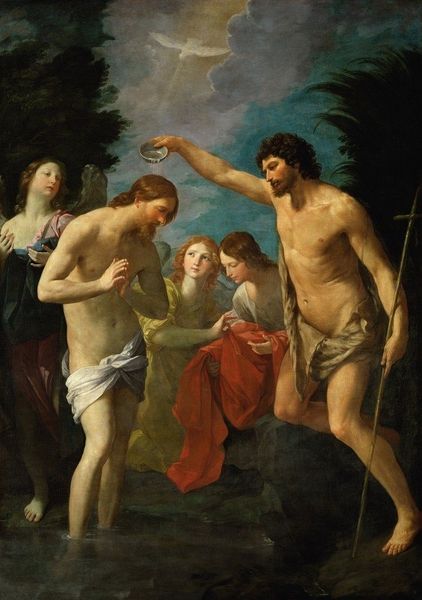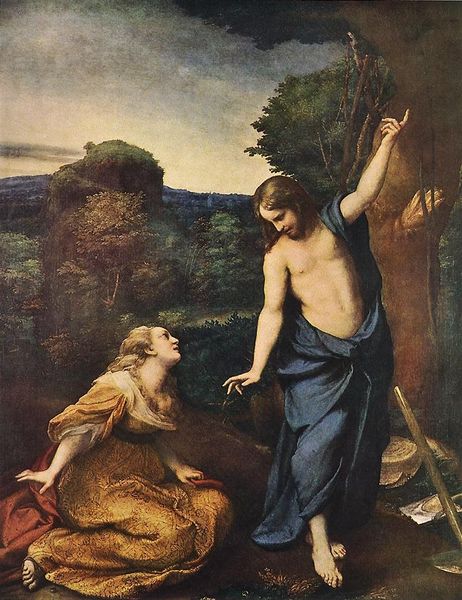
painting, oil-paint
#
baroque
#
painting
#
oil-paint
#
figuration
#
oil painting
#
history-painting
#
nude
Copyright: Public Domain: Artvee
Curator: Standing before us is Bartolomé Esteban Murillo’s "The Baptism of Christ," an oil painting dating back to 1655. Editor: The stark contrast between the coarse cloth of John’s garments and Christ’s pale flesh immediately catches the eye. The earthiness contrasts with the ethereal quality. Curator: Indeed, Murillo masterfully navigates earthly representation and divine presence, situating this profound moment in a relatable, human context, reflective of the Counter-Reformation ideals. Editor: It's intriguing to observe the tangible elements, like the pigments and the application of oil paint to canvas, and consider their social implications at the time. What labor practices were involved, and how did Murillo’s techniques reflect prevailing values regarding material and spiritual wealth? Curator: Murillo held a prominent position in Seville. His workshop employed many artists, catering to the demands of wealthy patrons and religious institutions seeking art that promoted Catholic doctrine through relatable and moving images. "The Baptism" would have reinforced orthodox beliefs but also displayed the commissioner's piety and standing. Editor: Notice, too, the gesture of John's hand. The curve as he pours water evokes the labor and craft of making art. Curator: It's certainly interesting how the softness in rendering flesh contrasts the detailed and coarser approach in rendering clothing. These depictions catered to a very specific and powerful audience. Editor: Precisely. Murillo’s choices weren’t solely artistic but deeply tied to the economic and societal structures that governed art production. The materiality served an ideological purpose. Curator: Considering its commission during a period of significant religious and social upheaval gives one much to consider. Editor: Reflecting on it through the lens of materiality really exposes the art production industry of the time. Thank you for pointing that out!
Comments
No comments
Be the first to comment and join the conversation on the ultimate creative platform.
